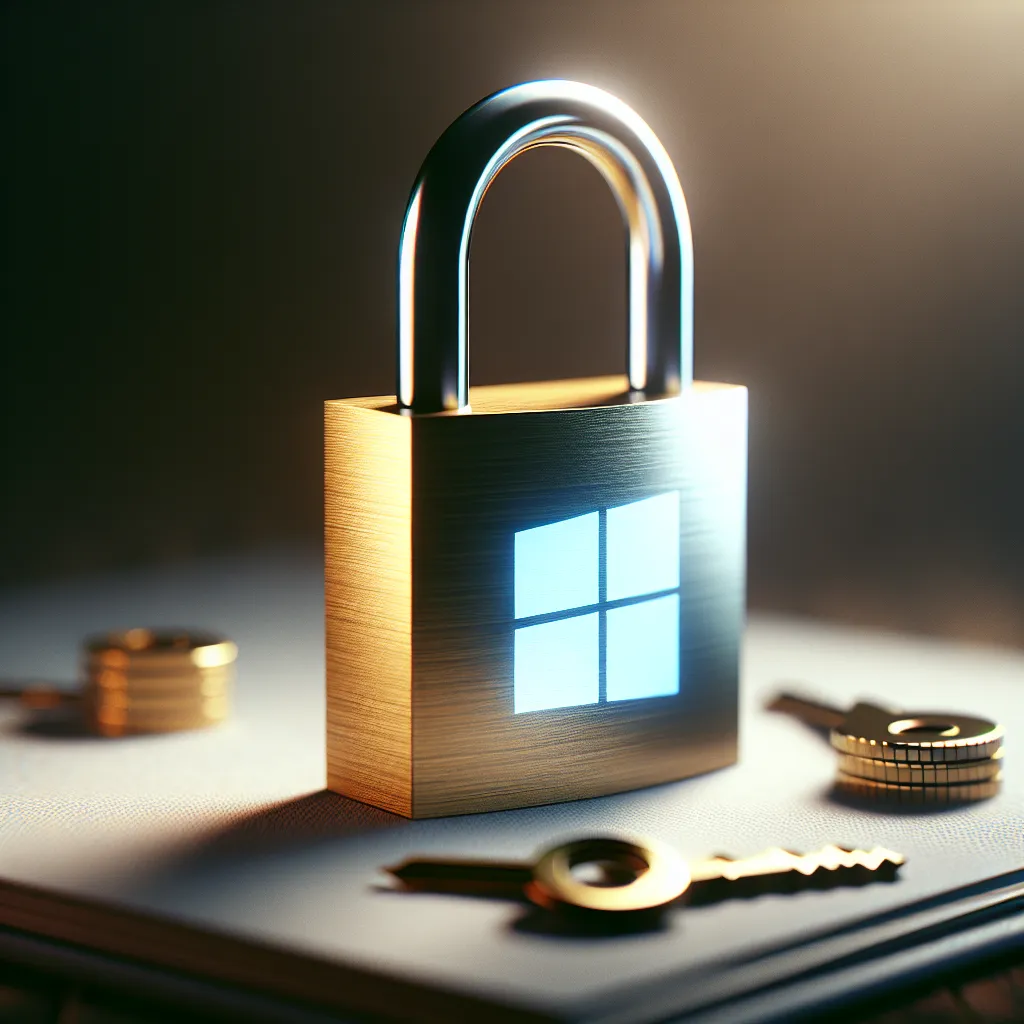Understanding the Importance of Microsoft Keys Security
Sure, here’s a snippet for your article:
Understanding the importance of securing your Microsoft keys is crucial in ensuring the safety and integrity of your Windows operating system. The windows key plays a vital role in accessing and activating the functionalities of your system. Therefore, prioritizing the security of your windows key is essential in safeguarding your digital assets.
Understanding the Importance of Microsoft Keys Security
Understanding the importance of Microsoft keys security is crucial in safeguarding sensitive information and protecting your digital assets. Microsoft keys, such as product keys and licensing keys, serve as the foundation for accessing and utilizing various Microsoft products and services. These keys are essential for software activation, software updates, and ensuring compliance with licensing agreements.
Securing your Microsoft keys is imperative to prevent unauthorized access, software piracy, and potential financial losses. By implementing robust security measures, such as encryption, multi-factor authentication, and monitoring access controls, organizations can mitigate the risk of key theft or misuse. Furthermore, maintaining an updated inventory of all Microsoft keys and regularly auditing their usage can help identify any anomalies or unauthorized activities.
In today’s interconnected digital landscape, the security of Microsoft keys directly impacts the overall integrity of an organization’s IT infrastructure. A compromised key can lead to data breaches, operational disruptions, and tarnished reputation. Therefore, investing in proactive security measures and staying informed about the latest security best practices is paramount for effectively safeguarding Microsoft keys.
By recognizing the significance of Microsoft keys security and implementing proactive measures, organizations can enhance their cybersecurity posture and protect their valuable assets from potential threats and vulnerabilities.
Best Practices for Securing Your Microsoft Keys
When it comes to securing your Microsoft keys, there are several best practices that can help ensure the safety and integrity of your digital assets. One of the fundamental steps is to carefully manage access control to your keys, ensuring that only authorized personnel have the necessary permissions to view or modify them. Implementing strong authentication measures, such as multi-factor authentication, can add an extra layer of security, making it more difficult for unauthorized users to gain access to your keys.
Furthermore, regularly monitoring and auditing the usage of your Microsoft keys can help detect any suspicious activities or unauthorized access attempts. By keeping a close eye on key usage, any anomalies can be identified and addressed promptly, minimizing the potential impact of security breaches.
Encrypting your Microsoft keys, both at rest and in transit, is another essential best practice for enhancing their security. This can prevent unauthorized access in case of a data breach or interception during data transmission. Additionally, storing your keys in a secure and compliant environment, such as Azure Key Vault, can provide an added layer of protection against unauthorized access and potential threats.
Lastly, maintaining regular backups of your Microsoft keys, and testing the restoration process, is crucial for minimizing data loss in the event of a security incident or system failure. By following these best practices, you can significantly enhance the security of your Microsoft keys and reduce the risk of unauthorized access or data breaches.
Common Threats to Microsoft Keys Security and How to Mitigate Them
When it comes to securing your Microsoft keys, it’s crucial to be aware of the common threats that can compromise their security and the strategies to mitigate these risks effectively. One of the most prevalent threats is phishing attacks, where malicious actors attempt to trick individuals into divulging their Microsoft keys through deceptive emails or websites. To counter this, it’s essential to educate employees about recognizing phishing attempts and implementing email filters to block suspicious messages.
Another significant threat is unauthorized access, which can occur through weak passwords or compromised login credentials. To address this, businesses should enforce strict password policies, including the use of complex and unique passwords, as well as implementing two-factor authentication for an additional layer of security. Regular monitoring of login activity can also help in detecting any unauthorized access attempts.
Moreover, ransomware poses a significant risk to Microsoft keys security, as it can encrypt sensitive data and demand payment for its release. To mitigate this threat, organizations should regularly back up their Microsoft keys and important data to secure, offsite locations. Additionally, comprehensive antivirus and antimalware solutions should be employed to detect and prevent ransomware attacks.
Lastly, social engineering attacks remain a persistent threat to Microsoft keys security, with perpetrators exploiting human psychology to manipulate individuals into disclosing confidential information. Training employees to be wary of unsolicited requests for sensitive information and implementing strict protocols for verifying identity can help organizations combat social engineering attempts effectively.
In conclusion, safeguarding your Microsoft keys from common threats requires a multi-faceted approach, including employee education, robust security measures, and proactive monitoring. By implementing these strategies, organizations can better protect their Microsoft keys and minimize the risk of security breaches.
The Future of Microsoft Keys Security: Emerging Technologies and Trends
As technology advances, the future of Microsoft keys security is being shaped by emerging technologies and trends. One such trend is the increasing use of biometric authentication methods, such as fingerprint and facial recognition, which provide a more secure way of accessing Microsoft keys. These technologies offer a level of security that is difficult to replicate, making them an attractive option for safeguarding sensitive information.
Another promising development is the rise of blockchain technology in securing Microsoft keys. Blockchain’s decentralized and tamper-evident nature makes it an ideal candidate for ensuring the integrity of keys and certificates. By storing key information on a blockchain network, organizations can enhance the security of their Microsoft keys and minimize the risk of unauthorized access or tampering.
Furthermore, the adoption of quantum-resistant cryptographic algorithms is poised to play a crucial role in the future of Microsoft keys security. As the threat of quantum computing grows, the need for cryptographic systems that can withstand quantum attacks becomes increasingly urgent. By implementing quantum-resistant algorithms, organizations can future-proof their Microsoft keys against potential security breaches.
Moreover, the ongoing integration of artificial intelligence (AI) and machine learning into security systems offers promising avenues for enhancing the protection of Microsoft keys. AI-powered solutions can analyze vast amounts of data to detect and respond to security threats in real time, bolstering the overall resilience of Microsoft key security measures.
In conclusion, the future of Microsoft keys security is being shaped by a combination of cutting-edge technologies and evolving trends. By embracing biometric authentication, blockchain technology, quantum-resistant cryptography, and AI-driven security solutions, organizations can fortify the protection of their Microsoft keys against an ever-changing threat landscape.




